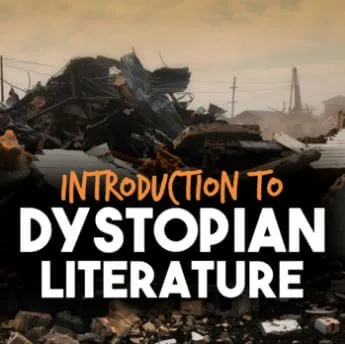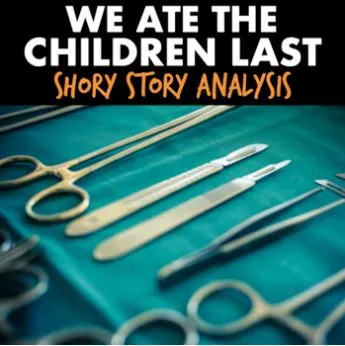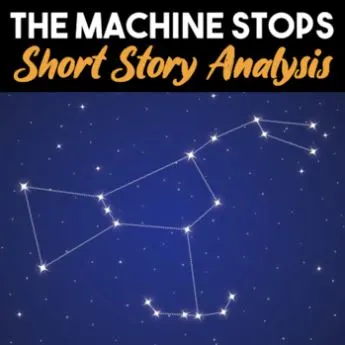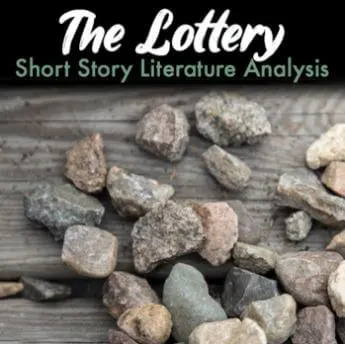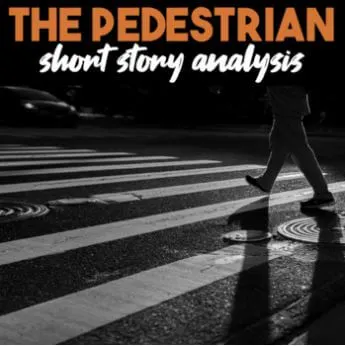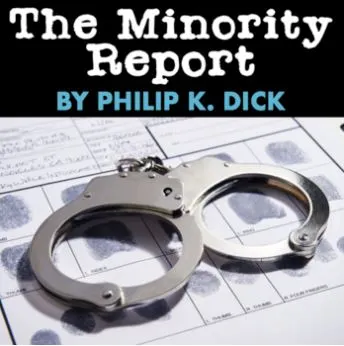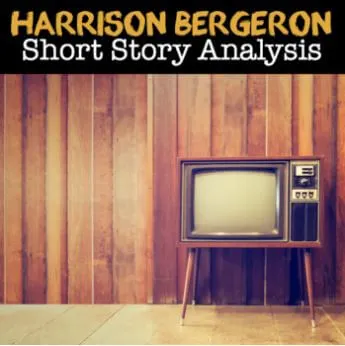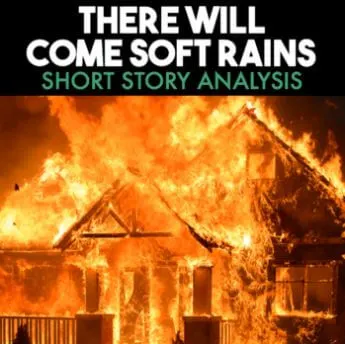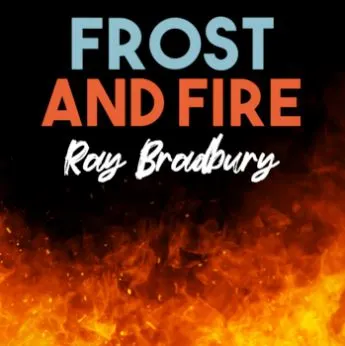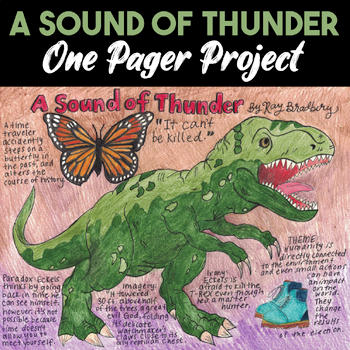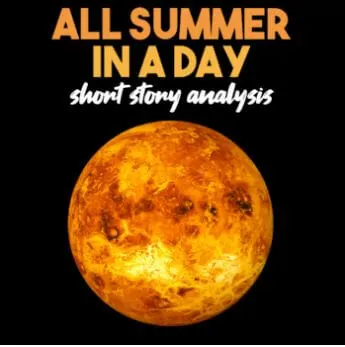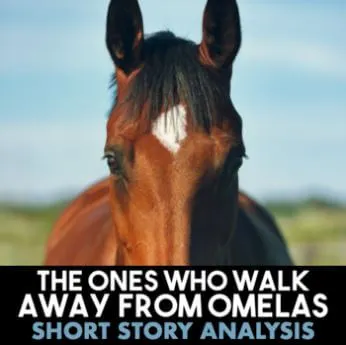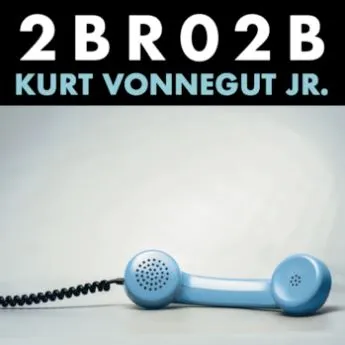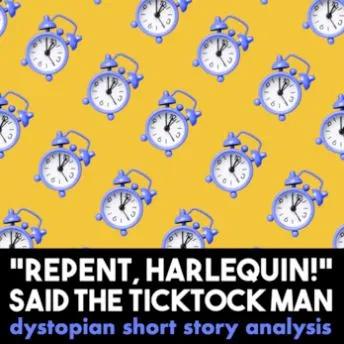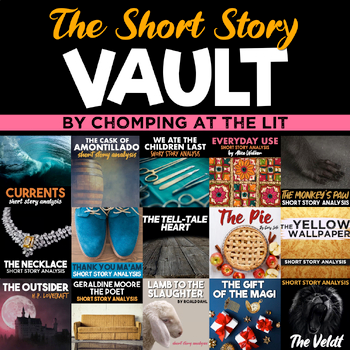Are you tired of scrounging the web, looking for dystopian short stories to teach in your secondary classroom? Look no further! Keep reading for a list of 31 dystopian short stories that will actually keep students engaged.
Why You Should Be Teaching Dystopian Short Stories ASAP.
I’m sure we can all agree: one of the biggest challenges ELA teachers face is finding quality literature that keeps students engaged. (Yep, been there.)
Luckily, there’s a genre that’s gained popularity over the recent years. Between the surge in shows like Black Mirror and The Society and movie adaptations of novels like The Hunger Games and The Divergent series, the dystopian genre is gaining a lot of traction.
The truth is, students (dare I say) enjoy reading this genre. Or, at least, find it more interesting than other genres. And let’s face the facts: students are far more likely to put forth the effort to engage with and analyze a text they find intriguing. And that makes our job, as teachers, a whole lot easier and class much more enjoyable for all.
Most importantly, however, dystopian literature opens the door for much-needed conversation. Between growing inequalities and political tension, our students are growing up around pressing issues. Throw in a 24-hour news cycle and it’s no wonder why anxiety and uncertainty are on the rise. As teachers, we have a unique opportunity to examine real fears through the guise of fiction. The best dystopian short stories take something very real and magnifies it to the (sometimes frightening) extreme.
Why Students Find Dystopian Literature Engaging.
While dystopian short stories offer a glimpse into a bleak vision of the future, teens find that the plotlines echo the struggles they face every day. Upon closer inspection, you’ll realize the genre is basically teenage angst amplified to a new extreme. Questioning authoritative figures and rules? Check. Over-the-top technology? Check. The fight for individualism and acting out in rebellion? Double check.
Often highlighting the (exaggerated) pitfalls of modern society, dystopian short stories offer students a chance to dive into their pressing questions, curiosities, and fears. Therefore, these short stories are both engaging and thought-provoking. Protected by fictitious plotlines, students are granted a safe space to work through some very real questions and concerns.
31 Dystopian Short Stories You Should Consider Teaching.
While short stories are a great way to introduce a new genre, they can also serve as complementary texts to a novel study. Additionally, short stories are a perfect solution if you’re simply looking to dip students’ toes into a dystopian world.
Regardless of how you plan to incorporate them into your classroom, here are 31 stellar dystopian short stories to consider adding to your syllabus.
- “We Ate the Children Last” By Yann Martel
This one is a quick read (a little more than 1,000 words) and I promise every line is more disturbing than the next! A medical breakthrough cures cancer, as well as other humanitarian issues like hunger and starvation. How you ask? Scientists put pig organs into humans! But, society is not prepared for the consequences when people impassively jump to get this surgery that dissolves their appetite for food completely. Martel satirizes the dangers of mob mentality and the impulsivity of the general public, as everyone is a little too eager to accept new technological advances without being sufficiently informed about the possible ramifications.
- “The Machine Stops” by E.M Forster
Despite being first published in 1909, Foster’s “The Machine Stops” rings eerily true in today’s world. There’s plenty of connections to be made as students read about a futuristic society where humans have become entirely dependent on technology, diminishing human connection. Not much matters beyond “the Machine,” where each person lives underground. It’s always fun to have students look at the machines we rely on in modern society, analyzing the implications of that dependency compared to that in Foster’s story.
- “The Lottery” by Shirley Jackson
In Jackson’s famous 1948 short story, she explores how societal structures and uniform expectations can lead to otherwise unjust actions. What first appears to be a rather pastoral setting proves to be just the opposite, showing a stark contrast between utopia and dystopia. After reading Jackson’s story, students will have a lot to say about conformity and questioning traditions. Additionally, students always enjoy watching the (rather outdated, but still entertaining) 1969 Britannica short film adaptation of the story.
- “The Pedestrian” by Ray Bradbury
Bradbury’s 1951 short story “The Pedestrian” achieves a powerful dystopian punch in under 500 words. By exploring popular dystopian themes of nonconformity and technological dehumanization, Bradbury shows the dangers of technological dependency. Get students’ brains churning as they unpack the comparison between the story’s city and a graveyard and see if they can draw any modern-day comparisons.
- “The Minority Report” by Philip K. Dick
This popular dystopian short story explores the paradox of free will vs. determinism, begging the question: can someone be convicted for a crime they haven’t actually committed yet? In Dick’s “The Minority Report,” personal privacy is nonexistent as a clairvoyant Precrime unit of the police force is able to predict future crimes. While the taskforce successfully stops obvious crimes like murder, readers start to wonder if there is another crime to justice being committed along the way.
- “Harrison Bergeron”by Kurt Vonnegut
First published in 1961, Vonnegut’s “Harrison Bergeron” remains a widely taught dystopian short story. The story explores a classic dystopian theme of equality vs. individualism, highlighting the cost of a so-called ‘perfect’ society. While complete equality might sound like an appealing solution to society’s disparities, students always enjoy answering the following question: at what cost? Additionally, there is a great opportunity to dive into the unique, albeit disturbing, role of the television in this fictional society, asking students to draw connections to modern day media.
- “There Will Come Soft Rains” by Ray Bradbury
Ask students to follow along with this eerie tale about a ‘smart house’ left behind in the wake of a nuclear explosion. Ask students to analyze the theme of life vs. technology, looking closely at the ironies in the story. While both in the story and in real life people depend on technology for simplicity and convenience, is there ever a point where it dehumanizes the human experience?
- “Frost and Fire” by Ray Bradbury
Under the surface, Bradbury’s “Frost and Fire” explores a fate we must all face: death. Taking place on a Mercury-like planet, the story follows protagonists Sim and Lyte as they must choose between conforming to enjoy the limited lifespan they are granted (eight days) or push the boundaries and seek knowledge in hopes of potentially prolonging their life. Thus, Bradbury brings forth an intriguing dilemma: is it better to seek knowledge and question what you know or accept life as it is, conforming what we are told.
- “A Sound of Thunder” by Ray Bradbury
Like many other of Bradbury’s short stories (and many others on this list), “A Sound Of Thunder” brilliantly draws attention to the potential dangers of technological advancement. Written in the wake of World War II, Bradbury highlights the fears many faced regarding technology and its negative impact on the world. While time travel might seem like a technological feat, Bradbury’s story will have students questioning if in fact it’s worth it. He also adeptly brings reads to question the relationship between man and nature, showing the repercussions of the attempt to override the natural order.
10. “April 2005: Usher II” by Ray Bradbury
Bradbury’s “Usher II” is a dystopian tale rooted in the paradox of freedom vs. control. (I’m sure your students can relate to this theme.) Enter: William Stendahl, avid lover of literary fiction. The problem? The government has set out to ban and destroy “all the beautiful literary lies and flights of fancy,” forcing Stendahl to build a “The Fall of the House of Usher” inspired home on Mars as an act of rebellion. But that, my teaching friend, is just the beginning. Aside from exploring dystopian themes, this short story is a compelling example of literary irony, allusion, and descriptive writing.
- “The Pendulum “by Ray Bradbury
Bradbury’s 1939 short story “The Pendulum” creatively explores the costs of technological advancement. Read the story aloud to have students feeling like they too are trapped in a pendulum of time, like the story’s imprisoned scientist, Layville. Will they sympathize with Layville or shun him for his attempt to override the rules of time with his time machine invention?
- “All Summer in a Day” by Ray Bradbury
While this Bradbury story is a quick read, it doesn’t make the dystopian pill any easier to swallow. With this story, Bradbury calls out how quick we are to band against an outsider. The story gives a glimpse into a dystopian colony on Venus forced to remain in an underground city due to extreme weather. Enter Margot and, with her, her individual thoughts that stand in stark contrast to the uniform expectations of those around her. Margot is ostracized by her peers, increasing her longing to escape and go back to Earth.
13. “Amaryllis” by Carrie Vaughn
One of the more modern stories on the list, Vaughn’s dystopian tale was first published in 2010. While the society in this story has adjusted to a new normal, their tragedy isn’t any less dystopian. Despite being less outwardly tragic, “Amaryllis” explores a society where everything is strictly controlled by quotas, including population. It doesn’t take long for students to start questioning how much control is too much control for any governing body to have over its people and individual freedoms.
- “The Last Curiosity” by Lucy Tan
What does it mean to be human? This is a big question that Tan takes on in her dystopian tale “The Last Curiosity.” Taking place after the (self) destruction of mankind, Tan puts together a story where artificial intelligence, called The Woken, set out on a mission to understand the essence and meaning of being human. Tan skillfully weaves compares and contrasts man with technology throughout the text. Ask students to track the juxtaposition!
- “The Ones Who Walk Away from Omelas” by Ursula K. Le Guin
Written in 1973, “The Ones Who Walk Away from Omelas” is a dystopian short story that calls into question the price of happiness and perfection. In the story, Omelas is a society whose utopia depends on the suffering experienced by one child. (And yes, it’s as cruel as it sounds.) It’s always fun playing a game of would you rather: utopia vs. dystopia prior to or following the reading of this thought-provoking tale.
- “Just Do It” by Heather Lindsley
In a world where we are being targeted by advertisements in the palm of our own hand, students will feel a deep connection to this story. In “Just Do It,” Lindsley introduces chemical advertising. Ads are literally shot (as darts) into people to create an incessant craving for the product at hand. I’m sure students will have a lot to say regarding the ethics behind targeted and, at times, manipulated desire. (Both in the story and in real life.)
- “Bloodchild” by Octavia E. Butler
Butler’s story is as much about loss of innocence as it is about oppression versus freedom. The story follows Gan, a Terran (aka human), living among their powerful hosts, the Tlic (picture aliens meet insects). The events that unfold over the course of this short dystopian tale showcase the complexities of the co-dependent relationship between the two species.
- “Peter Skilling” by Alex Irvine
Irvine’s story is one of the more recently published on the list, having first appeared in 2004. The story follows protagonis Peter Killing who, thanks to advanced medical science, is granted a second chance at life several decades after his initial death. However, as Skilling quickly learns, much has changed. Now a stranger in a place he once called home, Skilling must navigate a darker version of the United States run by rigid rules and structures. Can he survive? Students will have to read to find out!
- “Test” By Theodore Thomas
My students will love the unexpected ending of this dystopian short story. Students will be captivated from start to finish, imagining themselves in the driver’s seat in Thomas’ story. (Literally.) Robert, the protagonist, believes he has been in a horrific and tragic car accident when he is awoken to the truth: it was all part of a simulated test. This is where Thomas strongly emphasizes the dystopian theme of loss of individual agency as the men in lab coats quickly take any and all of Robert’s sense of independence away.
- “2 B R 0 2 B” by Kurt Vonnegut, Jr.
First published in 1962, “2BR02B” transports students to a dystopian world where aging has been cured. However, with this immortality comes the issues such as poverty and famine as a result of overpopulation. The solution? For every child born, one person must volunteer to die. Thus begins the conversation regarding the role of government and control in individual lives.
- “Examination Day” by Henry Slesar
Slesar’s short story hits the jackpot with dystopian themes, exploring concepts like fear, suppression, control, and freedom. The story takes place in a dystopian future where society is micro-managed by a totalitarian Government, controlling their freedoms in an attempt to achieve total equality. Unfortunately for a young boy named Dickie, intelligence is under strict regulation.
- “Billennium” by James Graham Ballard
Ballard’s dystopian short story has you yearning for space as you read. Set in a future world facing the issue of overpopulation, Ballard brilliantly paints a picture of an overcrowded (and arguably inhabitable) city busting at the seams. In a world faced with severe overpopulation, citizens are faced with confinement, corruption, and lack of control. Ask students to track the ironies in the story as they watch the protagonist, John Ward come to represent the very things he always hated.
- “Autumntime” by Anthony Lentini
Perfect for lower-level readers, Lentini’s “Autumntime” calls attention to the aspects of nature and our daily life we often take for granted. Set in a future where most of what is seen and consumed is artificial, a young boy is on his way to see his first-ever live tree at a preserved estate in Boston. However, upon realizing the property will soon be torn down and the tree with it, he steals an acorn to remember it by. The story shows that nothing can replace the beauty and wonder of Mother Nature.
- “The Perfect Match” by Ken Liu
Liu takes the idea of Siri to a whole new level in his dystopian short story “The Perfect Match” with the introduction of Centillion, or Tilly. Liu uses Tilly to write a cautionary tale about being constantly “plugged in.” Tilly is able to anticipate her master’s needs with the utmost accuracy. (Hello, Google Ads!) Despite the convenience technology creates, students will be able to track how the main character, Sai, unknowingly loses a sense of self and independence.
- “Ten with a Flag” by Joseph Paul Haines
Haines uses “Ten With a Flag” to paint a picture of two opposing forces, fighting to control the fate of an unborn child. Upon learning their child is expected to be a benefit to society, the baby’s father worries how government interference will infringe upon the rights of both the couple and their unborn child. In the blink of an eye (the story is rather short) control is seized in a confusing game of questions.
- “Repent, Harlequin! Said the Ticktockman” by Harlan Ellison
Follow along as Ellison creates a dystopian world where society is ruled by strict order and precise timekeeping. While the rest of the population conforms with obedience, the Harlequin makes a stand for individuality and freedom. Donning a jester-like costume, the Harlequin becomes the hero the society didn’t realize they needed, threatening the Ticktockman and the totalitarian government he represents.
- “The Scarlet Plague” by Jack London
If you’re looking for a bit of a longer text (okay, fine! Technically this is a novella, but it’s only 50 pages!) Jack London has you covered with “The Scarlet Plague.” London uses an epidemic to reflect on the socio- economic and cultural impact of immense fear. Aside from exploring the consequences of fear, students will be able to draw many comparisons from the story to the recent pandemic.
- “Anthem” by Ayn Rand
While technically considered a novella, “Anthem” is worth the extra pages. Students will be able to relate to protagonist Equality 7-2521’s desire for a sense of individual identity. However, the story takes place in a society where, in the wake of “the Great Rebirth,” individuals have no identity of their own. Instead, they are “the great WE” and exist within a rigid set of rules for the (supposed) betterment of the community. I’m sure students will have a lot to say about this subject matter.
- The Lorax by Dr. Seuss
A children’s book? Yup. At its core, The Lorax warns us of the environmental dystopia we could be headed for if we don’t take better care of the world around us. Taking place in a supposed utopia, the protagonists quickly realizes the dark truth about the consequences of trying to conquer and control the natural world. The Lorax serves as a great introduction to the dystopian genre. Alternatively, you can use it toward your unit’s end as a mentor text before students write their own dystopia-inspired cautionary children’s books!
- “The Veldt” by Ray Bradbury
Bradbury skillfully unfolds a story of technology gone too far in this classic dystopian tale. They’ll feel a mix of suspense and shock as they read about a family who has hopes of using technology to simplify their lives when, in reality, it destroys it. Despite first appearing in the 1950s, students won’t be able to stop drawing connections to the modern world. (I’m looking at you, Siri and Alexa.)
- “The Monsters are Due on Maple Street” by Rod Serling
Okay, so this one isn’t technically a short story. However, you can access the short script here. Sterling’s story holds a mirror up to society’s downfalls just as much as any other title on this list. Additionally, students eat it up, especially when followed by a showing of the Twilight Zone episode (season 1, episode 22). So, I couldn’t help myself and added it to the list! (You’re welcome.) In this episode, Sterling skillfully shows how quickly people are willing to turn on one another amid hysteria. Students will have no problem finding modern-day connections to fears of the unknown and the illogical assumptions and irrational actions it can lead to.
A Final Note On Teaching Dystopian Short Stories In Your Secondary Cladssroom.
Why stop the dive into the dystopian genre there? If you’re feeling up to it (or have time), consider following up your dystopian short story with a clip or two of a TV show or movie exploring similar themes. There are plenty of popular shows your kids have likely heard of– or perhaps have even seen! Just be sure to preview the clips or episodes first to make sure it’s appropriate to show in class. And let’s be real. Who doesn’t love watching videos in class? (No one.)
Engage students with slips of popular shows like The Handmaid’s Tale, Black Mirror, The Society, and Brave New World. You can also put their connection and analysis skills to the test after watching movie adaptations of popular novels like City of Ember, The Giver, Never Let Me Go, and The Hunger Games. If you’re looking for something a little lighter (and on the safe side), you’d be surprised just how many dystopian connections students can make with The LEGO Movie.
Just be warned: students will be eager to participate in the follow up discussions.

